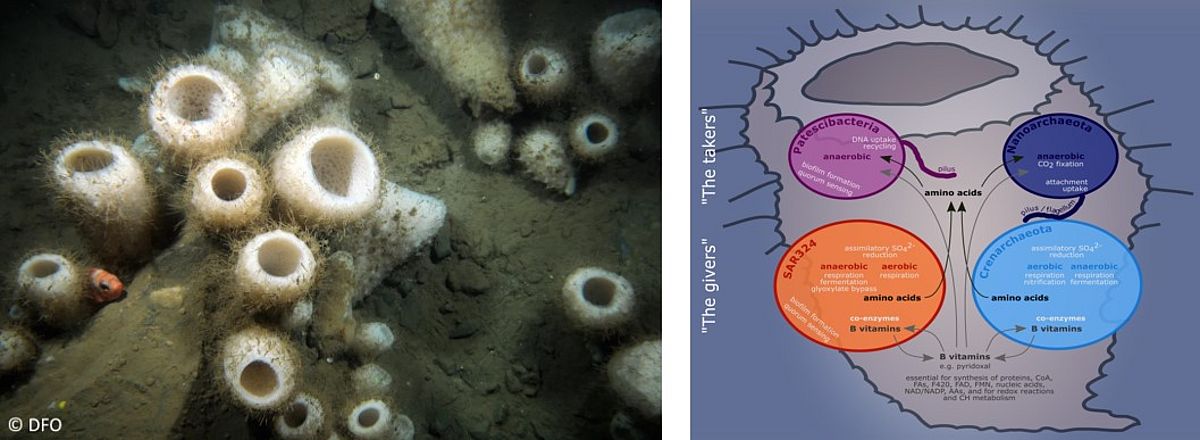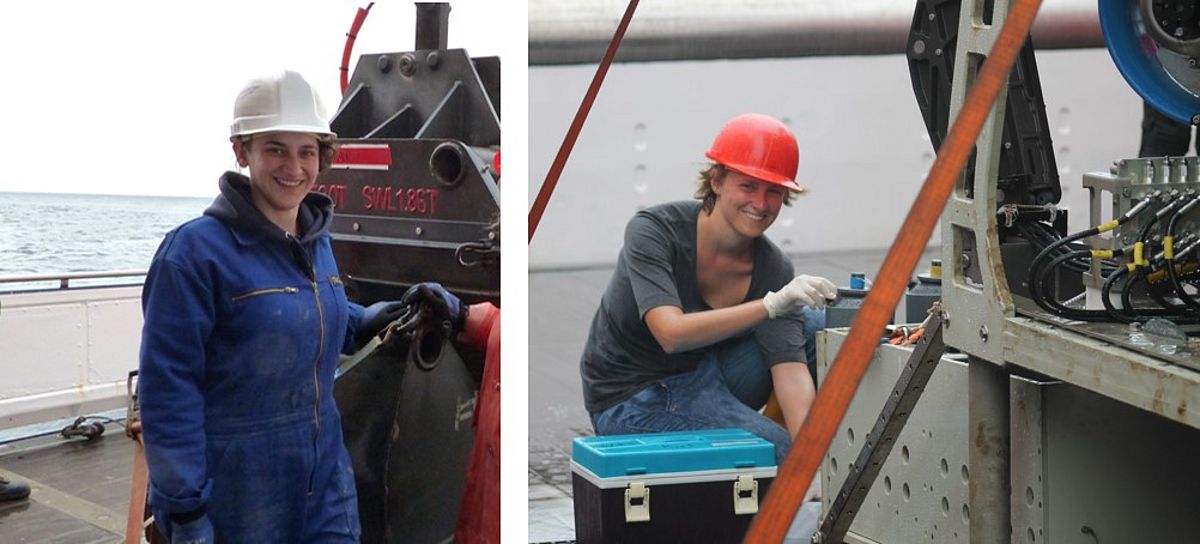Morganti TM, Slaby BM, de Kluijver A, Busch K, Hentschel U, Middelburg J, Grotheer H, Mollenhauer G, Dannheim J, Rapp HT, Purser A, Boetius A (2022) Giant sponge grounds of Central Arctic seamounts are associated with extinct seep life (Langseth Ridge, 87°N, 61°E). Nat Commun 13(1):638. doi: 10.1038/s41467-022-28129-7
Busch K, Slaby BM, Bach W, Boetius A, Clefsen I, Colaço A, Creemers M, Cristobo J, Federwisch L, Franke A, Gavriilidou A, Hethke A, Kenchington E, Mienis F, Mills S, Riesgo A, Ríos P, Roberts EM, Sipkema D, Pita L, Schupp PJ, Xavier J, Rapp HT & Hentschel U (2022) Biodiversity, environmental drivers, and sustainability of the global deep-sea sponge microbiome. Nat Commun 13, 5160. https://doi.org/10.1038/s41467-022-32684-4
Maldonado M, López-Acosta M, Busch K, Slaby BM, Bayer K, Beazley L, Hentschel U, Kenchington E and Rapp HT (2021). A Microbial Nitrogen Engine Modulated by Bacteriosyncytia in Hexactinellid Sponges: Ecological Implications for Deep-Sea Communities. Front. Mar. Sci. | DOI: 10.3389/fmars.2021.638505
Bayer K, Busch K, Kenchington E, Beazley L, Franzenburg S, Michels J, Hentschel U, Slaby BM (2020) Microbial strategies for survival in the glass sponge Vazella pourtalesii. mSystems00473-20. DOI: 10.1101/20t20.05.28.122663
Busch K, Beazley L, Kenchington E, Whoriskey F, Slaby B, Hentschel U (2020) Microbial diversity of the glass sponge Vazella pourtalesii in response to anthropogenic activities. Conservation Genetics, 21. pp. 1001-1010. DOI 10.1007/s10592-020-01305-2.
Busch K, Hanz U, Mienis F, Müller B, Franke A, Roberts EM, Rapp HT, Hentschel U (2020) On giant shoulders: How a seamount affects the microbial community composition of seawater and sponges. Biogeosciences: doi.org/10.5194/bg-2020-15
Steinert G, Busch K, Bayer K, Kodami S, Martinez Arbizu P, Kelly M, Mills S, Erpenbeck D, Dohrmann M, Wörheide G, Hentschel U, Peter J. Schupp PJ (2020) Compositional and quantitative insights into bacterial and archaeal communities of South Pacific deep-sea sponges (Demospongiae and Hexactinellida). Front Microbiol 11, 716: doi.org/10.3389/fmicb.2020.00716
Rubin-Blum M, Antony CP, Sayavedra L, Birgel D, Peckmann J, Wu YC, Cárdenas P, Martinez-Perez C, Marcon Y, MacDonald I, Sahling H, Hentschel U, Dubilier N (2019) Fueled by methane: Deep-sea sponges from asphalt seeps gain their nutrition from methane-oxidizing symbionts. ISME J. 13(5):1209-1225; doi: 10.1038/s41396-019-0346-7.




